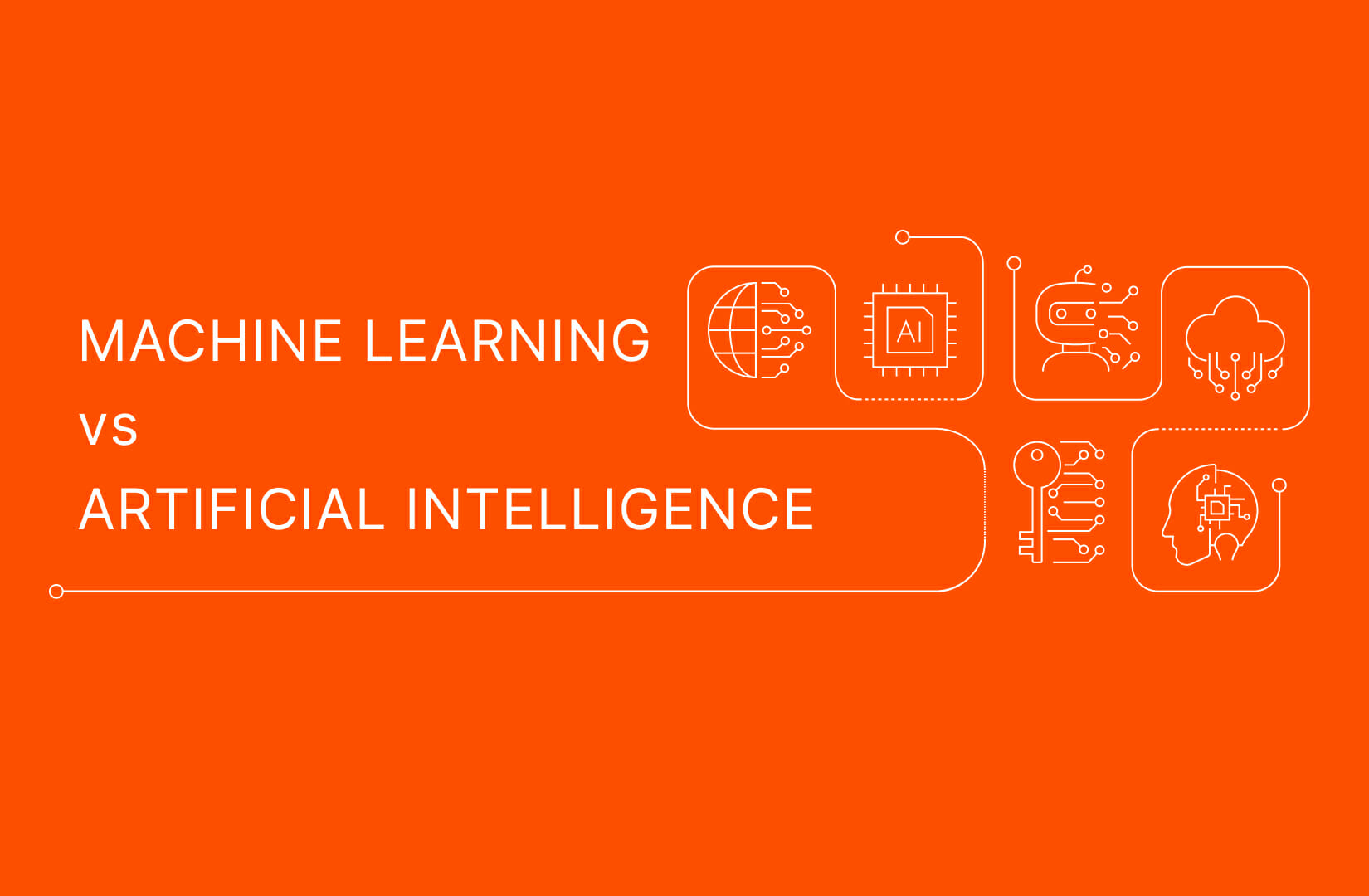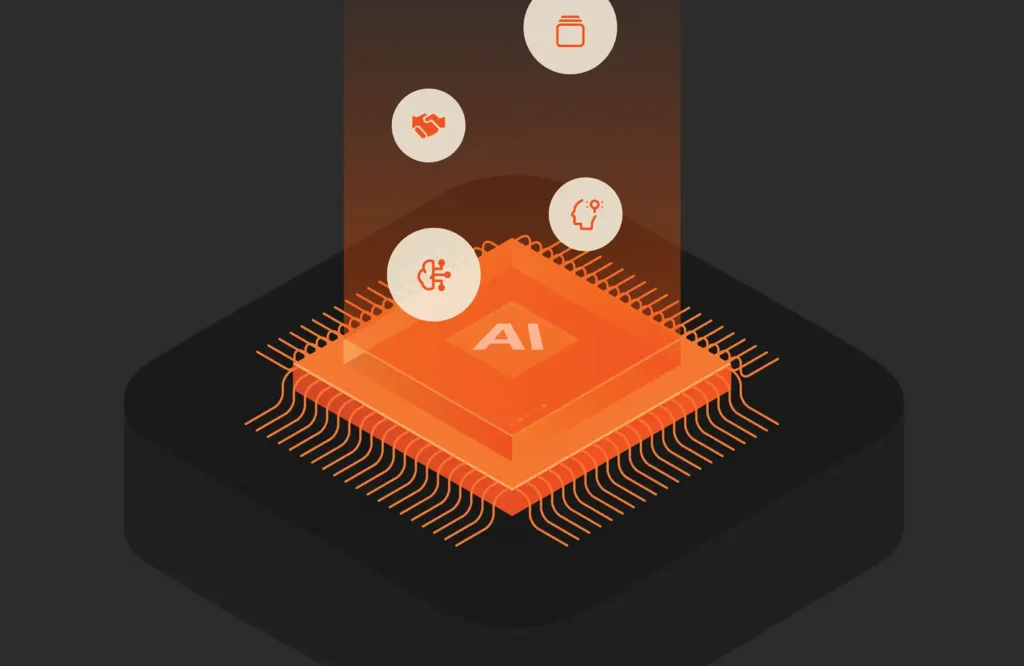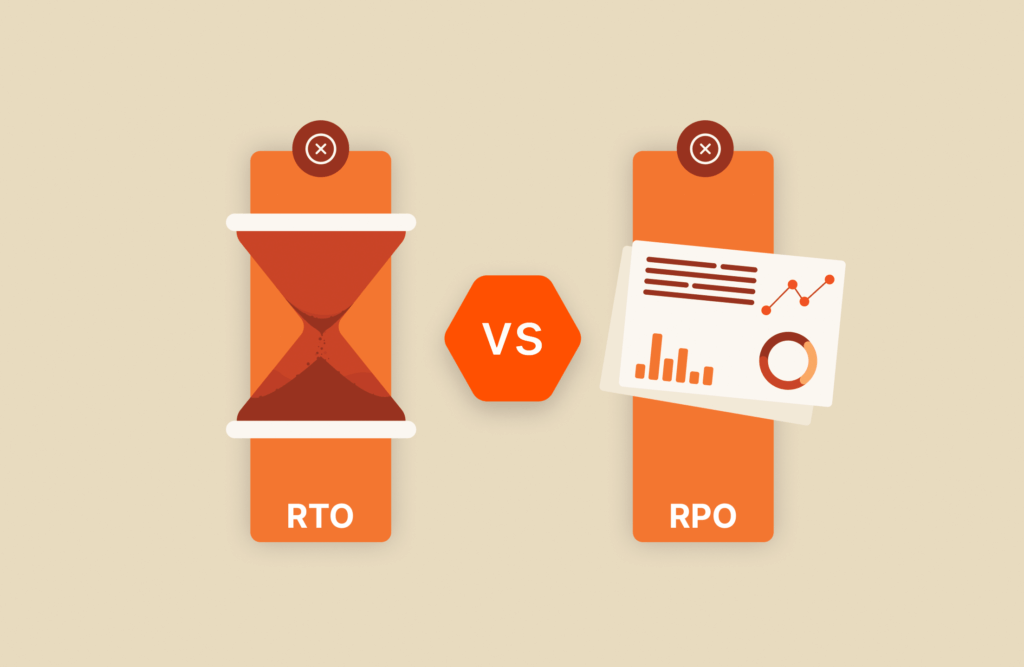Artificial intelligence (AI) and machine learning (ML) are increasingly popular subjects, but what’s the difference between the two? Let’s take a closer look at the two fields.
In simple terms, AI is a wide field of technology that’s used to create intelligent machines, while ML is a subset of AI that uses algorithms to learn from data independently of human intervention.
Both these technologies seek to create systems that can solve complex problems and make intelligent decisions. Here’s how they differ in more detail.
What Is Artificial Intelligence (Really)?
Artificial intelligence (AI) is a broad discipline concerned with creating intelligent computer systems. Applications of AI include natural language processing, robotics, and computer vision.
Natural language processing (NLP) is the processing of human text and speech so that machines can understand and respond. Robotics is concerned with the design and creation of robots that can perform tasks more easily, efficiently, and consistently than humans, while computer vision focuses on processing machine-based images.
Organizations use AI technology to generate greater insights, improve productivity, and accelerate decision-making.
What Is Machine Learning?
Machine learning (ML) is a subset of AI that uses algorithms to learn from large volumes of historical data without the intervention of humans. As ML applications receive new data, they learn, adapt, and improve their accuracy to make more accurate predictions and provide greater insights.
Data scientists train machine learning algorithms using large amounts of data, which allows them to identify patterns and make predictions when they encounter new situations. ML has many use cases, including customer behavior analytics, recommendation engines, predictive maintenance, and autonomous vehicles.
Machine Learning vs. AI: Difference in Types
Types of Machine Learning
Machine learning is categorized into four main types based on how an algorithm learns to make more accurate predictions.
Supervised Learning
The primary aim of the supervised learning technique is to map an input parameter with an output parameter. In this case, machines are trained with labeled data sets, and both the input and output algorithms are specified. This allows the program to predict outputs based on the training provided.
This technique is called supervised learning because it requires human labor to apply labels to training examples manually. Models need to be trained on large volumes of hand-labeled data to ensure more accurate results.
There are two categories of supervised learning:
- Classification: Focuses on problems where the output variable is binary (e.g., true or false, yes or no, etc.).
- Regression: Focuses on problems where the input and output variables have a linear relationship. The output variable is a real value, such as “salary” or “weight.”
Unsupervised Learning
In this approach, algorithms train on unlabeled data sets and learn to predict outputs without being given input and output parameters. Here, algorithms process the data sets looking for patterns and connections, and then group the unlabeled data sets based on similarities and differences.
Unsupervised machine learning can also be broken down into two types:
- Clustering: Groups data into clusters based on parameters such as similarities or differences (e.g., grouping customers based on past product purchases).
- Association: Determines the relationship between the variables of a large data set by identifying and mapping how various data items depend on each other. Association learning is used in marketing data analysis to understand customer purchasing habits and enable cross-selling strategies.
Semi-supervised Learning
Because supervised learning needs large amounts of hand-labeled data, it can be slow and costly. On the other hand, unsupervised learning has limited applications and provides less accurate results. Semi-supervised learning is a combination of supervised and unsupervised learning that overcomes many of these limitations.
In this case, algorithms are trained using a small portion of labeled data within larger amounts of unlabeled data sets, enabling the algorithm to do at least some learning on its own. As a result, semi-supervised learning can be applied in a variety of applications, including crawling engines, content aggregation systems, and image recognition.
Reinforcement Learning
Reinforcement learning is a feedback process that uses algorithms to give positive or negative feedback as they attempt to complete multi-step tasks. Using a trial-and-error process, the machine takes an action, learns from it, and improves performance based on the feedback given.
Reinforcement learning uses two methods:
- Positive reinforcement learning: Reinforces a specific behavior using rewards so that the behavior is more likely to happen again.
- Negative reinforcement learning: Uses negative feedback to prevent a specific behavior or negative outcome.
Reinforcement learning can be applied across different industries, including gaming, manufacturing, and healthcare.
Types of Artificial Intelligence
AI, on the other hand, comprises three major categories:
Artificial Narrow Intelligence (ANI)
ANI applies artificial intelligence to specific tasks, using specific data sets (e.g., sets of questions and answers) and algorithms to perform specific tasks.
Examples of ANI include Alexa and Google Assistant. ANI is also known as “weak AI” because the applications themselves do not mimic the consciousness and awareness of a human being to learn or “think” for themselves.
Artificial General Intelligence
This category includes hypothetical machines that may someday be able to perform intelligent tasks that mimic human intellect, meaning that systems would use previous knowledge to learn and apply what they know to solve problems.
AGI is also known as “strong AI” because it aims to create AI machines that can learn, think, and act as humans do. AGI systems do not currently exist and progress toward developing them has slowed since their initial inception.
Artificial Super Intelligence (ASI)
Another future technology, ASI goes beyond mimicking human behavior to actually surpassing it. Also known as “super AI,” ASI is considered the most intelligent and advanced type of AI possible. If they can ever be executed, ASI machines could potentially have cognitive skills and understand emotions.
Machine Learning vs. AI: Processing Power
The processing power you need for AI and ML will differ based on the type of workload you intend to run. GPUs are the preferred choice for processing large AI workloads and complex problems, though both CPUs and GPUs can be used.
Machine learning systems involve complex multi-step processes that require large amounts of training data, a great deal of speed, and high performance. Models learn faster when tasks can be performed at the same time.
Because GPUs use parallel processing, they enable calculations to be performed simultaneously on multiple data samples. Tasks are divided into smaller subtasks and distributed among the GPU’s many processor cores, allowing tasks to be performed with the same efficiency and speed as smaller data sets.
CPUs are comparatively better at performing sequential tasks on complex computations quickly and efficiently. While they’re less efficient at parallel processing, they can still be used for some types of AI that don’t require parallel processing or for training small-scale AI workloads.
Machine Learning vs. AI: Modern Examples
Next, let’s look at some examples of machine learning and artificial intelligence.
Artificial Intelligence
A few examples of modern AI use cases include:
- Chatbots: Many organizations use chatbots for their online customer support and voice messaging systems. These applications use natural language processing and natural language understanding to ask and answer customer queries.
- Digital assistants: Siri, Alexa, and Google are familiar examples of digital assistants that use voice recognition to respond to a user’s commands. They use data to interpret questions and supply answers.
- Autonomous and semi-autonomous vehicles: In the automotive industry, AI enables self-driving cars to recognize lane markers and traffic lights and determine when they can change lanes.
Machine Learning
Here are some ways modern applications use machine learning:
- Image recognition: Allows systems to identify an object as a digital image based on pixel intensity. Using image recognition, applications can assign a name to a photo, such as in the case of Facebook tagging or handwriting recognition. Facial recognition is another well-known application of image recognition.
- Traffic alerts: Google Maps, a widely used web service, not only gives you directions but also gathers and analyzes real-time traffic information from other users to help you find the best and fastest route at a specific time of day.
- Recommendation engines: Organizations such as Amazon, Facebook, and Netflix use ML to provide product recommendations or suggestions based on previous user behavior, such as purchases, searches, or clicks.
Machine Learning vs. AI: Key Differences
Finally, consider that the primary difference between ML and AI is that AI seeks to create intelligent machines that can think like a human and solve complex problems. ML enables machines to learn from data to increase the accuracy of their output.
Here are some other key differences:
- AI has a broad range of applications, including ML, NLP, and robotics. Machine learning is a subset of AI with a more condensed scope.
- AI simulates human intelligence to create smart systems that can perform various complex tasks and solve complex problems. Machine learning seeks to train systems to learn as they encounter and process to maximize performance and improve the accuracy of specific tasks.
- AI applications focus on maximizing success. ML applications focus on identifying patterns and relationships to maximize accuracy.
- AI works with structured, semi-structured, and unstructured data. ML works only with structured and semi-structured data.
Scale Capacity and Performance with AIRI//S
Regardless of your specific application, AI and ML workloads require massive amounts of storage to learn and solve problems using structured and unstructured data. Simplify your AI deployment with AIRI//S™, a simple, fast, out-of-the-box AI solution.
From data capture to neural network training, this next-generation AI infrastructure can scale to support the massive data pipelines that form the foundation of modern data analytics.
AIRI//S, architected by Pure Storage® and NVIDIA, is powered by NVIDIA’s DGX A100 GPU and Pure’s FlashBlade//S™ storage platform for both file and object workloads that enables you to scale capacity and performance independently.

Next-gen AI Infrastructure
Simplify your AI deployment with a simple, fast, out-of-the-box AI solution.







